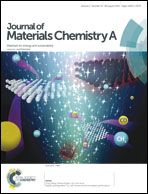A new design strategy for high-energy low-sensitivity explosives: combining oxygen balance equal to zero, a combination of nitro and amino groups, and N-oxide in one molecule of 1-amino-5-nitrotetrazole-3N-oxide
Abstract
We report a new strategy to design a novel high-energy low-sensitivity explosive, 1-amino-5-nitrotetrazole-3N-oxide (ANTZO), with outstanding overall performance by combining oxygen balance equal to zero, a combination of nitro and amino groups, and N-oxide in one molecule. Its detonation performance and stability were estimated using the density functional theory method and compared with some well-known explosives such as 2,4,6,8,10,12-hexanitro-2,4,6,8,10,12-hexaazaisowurtzitane (CL-20) and 1-methyl-2,4,6-trinitrobenzene (TNT). Its heat of detonation (7.03 kJ g−1) and detonation velocity (9.87 km s−1) are larger than those of CL-20, while its h50 value (29 J) is higher than that of TNT, indicating that ANTZO has both the high detonation performance of CL-20 and the low sensitivity of TNT, making it valuable and attractive for experiments. Intramolecular hydrogen transfer is the initial decomposition step of ANTZO with the activation energy for this thermal decomposition reaction being about 51.5 kcal mol−1. Our results indicate that our new strategy used for designing ANTZO is practical and may be applied to design and develop other explosives with high energetic properties and low sensitivity.


 Please wait while we load your content...
Please wait while we load your content...